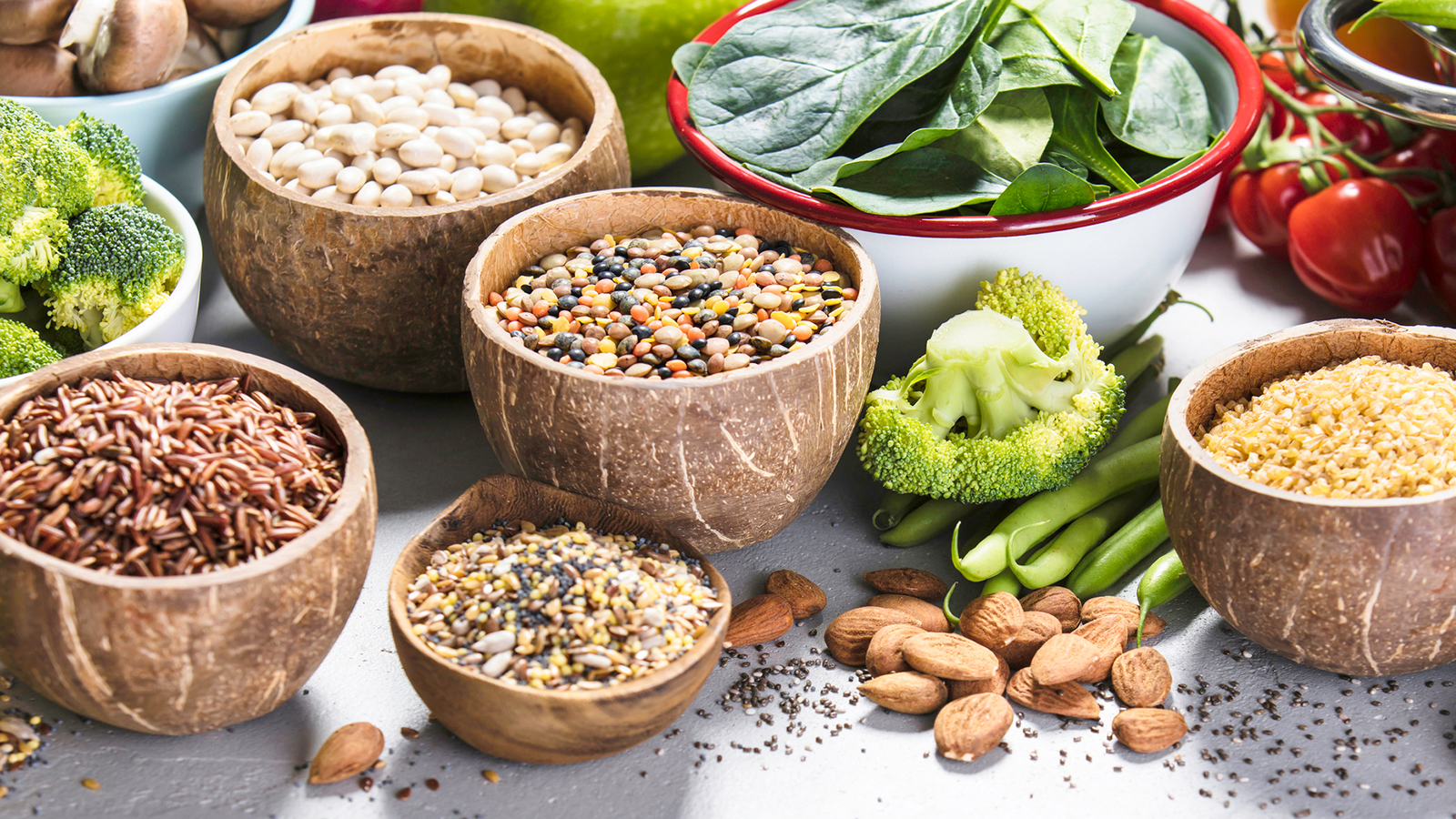
Getting enough fibre in your diet is a common topic of conversation when it comes to healthy nutrition. And while there may be many grey areas in other discussions around what we should be eating, dietary fibre usually isn’t one of them.
All the evidence points to fibre being a positive boon for our bodies, with an abundance of health benefits across everything from easing constipation to boosting immunity to preventing cancer. But what is fibre exactly, what does it do, and how can we ensure we’re getting the fibre we need?
What is fibre?
Fibre, also known as roughage, is essentially the carbohydrate parts of plants that your body is unable to digest. So when you eat it, mainly in fruits, veges, whole grains, legumes and nuts, it passes right through your system – from stomach to intestines to colon and out – relatively intact.
If you think that sounds fairly pointless, think again. Because en route, fibre performs a whole heap of different roles that are beneficial to your health.
The health benefits of fibre
There are many different types of fibre, but they are usually classified as either soluble or insoluble: they dissolve in water, or not. And together, they combine to give your body a real health boost, because a high-fibre diet can:
• Keep you regular
Let’s start with stools. Dietary fibre can help your evacuations by increasing both size and consistency. If things are too hard, fibre helps to soften the blow and relieve constipation. Or if you’re at the other end of the scale, fibre can help to firm things up. Either way, you get a happier trip to the toilet.
• Help maintain bowel health
Not content with finessing your faeces, fibre keeps up the good work by sorting your digestive system too. A high fibre diet may lower your risk of haemorrhoids and prevent diseases in your colon, including cancer.
• Lower your cholesterol
Soluble fibre - such as you find in beans, oats, and bran - can help to lower your cholesterol levels, and reduce your risk of heart disease. It may also reduce your blood pressure and ease inflammation in various parts of your body.
• Regulate your blood sugar
For people with diabetes, fibre can slow the absorption of sugar and help to keep your blood sugar levels more stable. It can also help to reduce your risk of developing type 2 diabetes in the first place.
• Help you stay a healthy weight
Because it is barely digested in the body, fibre keeps you feeling fuller for longer. So you’re less likely to overeat, as the volume in your gut remains for longer – and has fewer calories than other types of food.
• Help you live longer
As well as reducing your risk of heart disease, a fibre-rich diet has been associated with boosting your immunity and preventing many different types of cancer.
Tips for getting enough fibre
Pretty impressive for something we can’t digest, huh? So now we know the benefits, how do we go about making sure we’re getting enough fibre in our diet? Here are our top tips:
1) Big up the bran
Bran is a great way to up your fibre intake with ease. There are many high-fibre bran-based cereals out there to jump start your day, usually namechecking it too. For taste, texture and goodness, you could even try sprinkling some raw wheat bran on other food, anything from pancakes to muffins.
2) Bring the beans
If you thought beans were magical before, they’re even better now. Because beans and pulses are some of nature’s most fibre rich foods. So whether you add some kidney beans to your chilli, lentils to your curry, or simply choose broad beans or French beans as a side for your main, you’ll be sure to bring some extra fibre to your day.
3) Stay fruity
Fruit is rich in fibre, especially berries because they’re packed with tiny seeds that store it better than the surrounding pulp. So feel free to go to town on raspberries, blueberries, strawberries, boysenberries and even gooseberries. And try to eat whole fruits rather than just drinking fruit juices.
4) Eat your greens
Like fruits, vegetables are a great source of fibre. That means broccoli, cabbage, cauliflower, kale, spinach et al. Anything with a generous dash of greenery about it in fact, including peas. So whatever you do, give peas a chance.
5) Heap on the whole grains
If you’re looking for a really wholesome way to include fibre in your diet, you can’t go past whole grains. Breads made with wholewheat flour, brown rice, barley, quinoa, wholewheat pasta… you name it, they’ll get the job done. Potatoes too, thanks to the starch.
6) Go nuts for nuts
Nuts pack a fibre punch all their own, and it only takes a handful or two to get you well on the way to your daily fibre quota. So whether almonds are your thing, peanuts, walnuts, cashews, pistachios – or seeds like pumpkin and sesame, feel free to go nuts.
Finally, remember fibre is your friend, but you can always have too much of a good thing. Most nutritionists recommend around 20-30 grams per day.1 Also, be aware that adding too much fibre to your diet too quickly can give you wind. So try to increase your intake gradually, and be sure to drink plenty of water.
References:
1 https://www.hsph.harvard.edu/nutritionsource/carbohydrates/fiber/
Other reference:
https://nutritionaustralia.org/app/uploads/2020/05/Fibre-2014.pdf
https://www.everydayhealth.com/digestive-health/experts-why-is-fiber-important.aspx
https://www.todaysdietitian.com/newarchives/063008p28.shtml
https://www.health.harvard.edu/blog/fiber-full-eating-for-better-health-and-lower-cholesterol-2019062416819